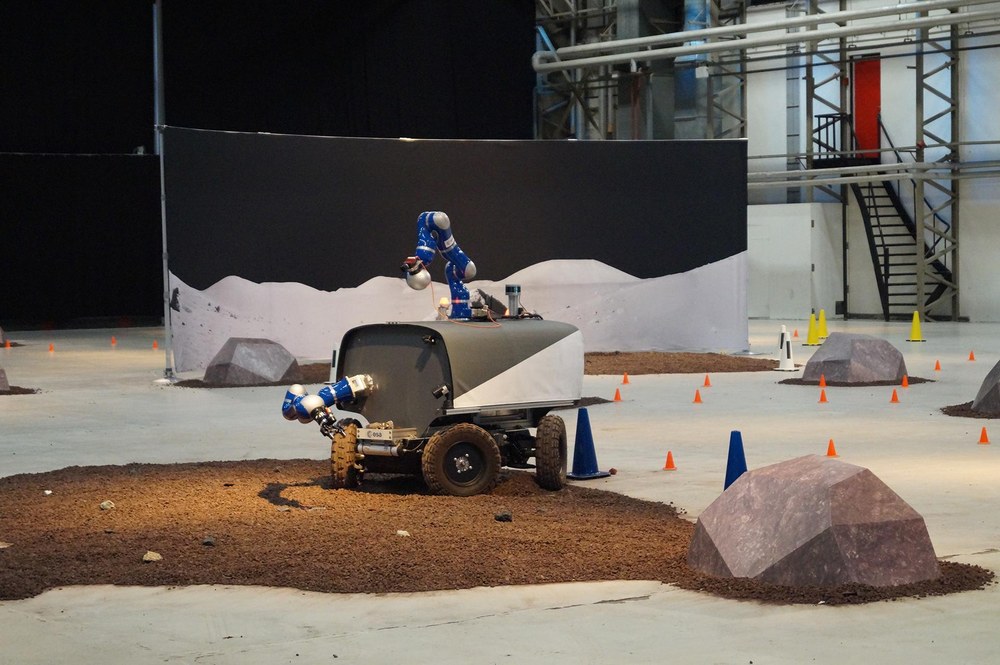An astronaut controls a rover on Earth


Focus: Space, Robotics
The ISS telerobotics experiment Analog-1 was conducted on 25 November 2019, using DLR robotics technology. Astronaut Luca Parmitano controlled the European Space Agency (ESA) ‘Interact’ rover from the International Space Station (ISS). The rover was located on a test site in Valkenburg, the Netherlands, which is representative of the lunar surface. During the experiment, Parmitano successfully collected rock samples using a robotic arm. This is the first time that such a complex robot has been remotely controlled from space with force feedback. The teleoperation control system was developed at the DLR Institute of Robotics and Mechatronics.
Parmitano had already tested the remote operation of the rover and robotic arm during his ‘test run’ on 18 November. The experiment allows a human being to control a robot on Earth from the ISS, while also being able to perceive the forces experienced by the robot.
The force feedback enables the astronaut to control the interaction forces exerted by the robot intuitively and thus carry out intricate or delicate tasks. DLR researcher Harsimran Singh explains: “DLR’s control system design ensures that the robot cannot apply any forces to its environment without the astronaut sensing them. This is critical to ensure the safety of the interactions between the robot and its environment – particularly when there is a significant time delay.”
Teleoperation technology is already complex on Earth, but in space it presents additional challenges, as DLR researcher Michael Panzirsch explains: “For one thing, the force feedback is impaired by high yet variable time delays – an average of 800 milliseconds, with outliers of up to three seconds, together with possible data packet losses and even communications interruptions. In addition, the astronaut is in microgravity, which can be detrimental to the sensorimotor system and potentially make teleoperation more difficult.”
The Analog-1 is the final part of the METERON (Multi-Purpose End-To-End Robotic Operation Network) suite of experiments, which have been investigating how intelligent robots can be controlled on planetary surfaces by astronauts in orbit, among other things.

Video: Analog-1 Interact Rover im Betrieb
Your consent to the storage of data ('cookies') is required for the playback of this video on Quickchannel.com. You can view and change your current data storage settings at any time under privacy.
Back in 2017 and 2018, astronauts including Alexander Gerst controlled the humanoid robot Justin from the ISS while it worked in the DLR robotics laboratory. If, in the future, semi-autonomous robots are to explore the Moon or Mars, or set up and maintain infrastructure there, astronauts could operate them from an orbiting space station.
“This type of experiment might seem simple, but its technical complexity – due to the interaction between the robot and a human under space station conditions – is such that many experts need to work together,” says Thomas Krüger, Team Lead at ESA’s Human-Robot Interaction Laboratory. “We are very happy to be collaborating with DLR and hope to continue to work together in future and on other missions.”
